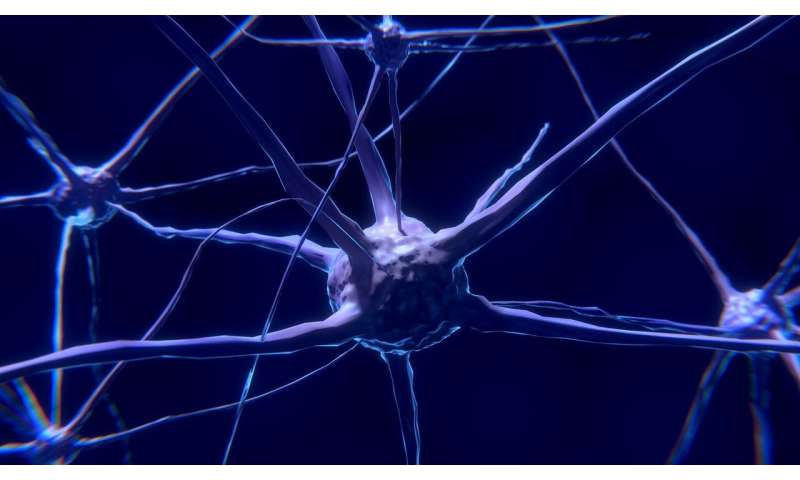
The basal ganglia (BG) are a group of subcortical brain nuclei that control automatic behavior in humans and other animal species. The BG has been found to show peculiar activity in people affected by a number of mental and neurodegenerative disorders, including Parkinson’s disease, obsessive-compulsive disorder (OCD) and schizophrenia.
The ventral pallidum (VP) is a specific structure within the BG’s limbic system that is involved in human emotional processing. While several past neuroscientific studies have explored the functions of the BG and its limbic system, the role of the VP is still poorly understood.
Researchers at the Hebrew University, the Institute of Medical Research Israel-Canada (IMRIC), Hadassah University Hospital and New York University School of Medicine have recently carried out a study aimed at shedding some light on the function of VP neurons within BG brain regions. Their results, presented in a paper published in Nature Neuroscience, are based on data collected during a classical conditioning experiment on monkeys.
“Possibly due to the anatomical proximity of the VP to the GPe (external segment of the globus pallidus) and the morphological similarity of cells in these two regions, until not long ago the VP was considered to be an extension of the GPe,” Alexander Kaplan, one of the researchers who carried out the study, told Medical Xpress. “We therefore decided to study the functional roles of the VP in the BG circuitry, using the actor-critic framework.”
Past studies have found that neurons located in the BG can be classified into different categories based on their responses to behavioral events. For instance, midbrain dopaminergic neurons typically present phasic responses to cues that precede a reward (i.e., pleasurable experience), as well as to receiving or not receiving the reward itself. Neurons located in the BG’s main axis, on the other hand, exhibit continuous responses that are sustained over time.
In their study, Kaplan and his colleagues used a method called principal component analysis (PCA) and clustering techniques to analyze the responses of VP neurons to cue-related events. Their analyses were carried out on recordings of VP neuron spiking activity collected in monkeys as they completed a classical conditioning task. This procedure ultimately allowed them to classify different VP cells into two different categories or populations: persistent and transient neurons.
“The key differences we observed were that persistent VP neurons showed strong positive correlations with the monkeys’ behavior (in our study, licking and blinking),” Kaplan explained. “On the other hand, transient VP neurons were strongly associated with the rate at which the relevant behavior was learned. We also found strong evidence suggesting that the transient VP encoded reward prediction errors, whereas the persistent VP neurons did not.”
Essentially, Kaplan and his colleagues observed that VP neurons in the persistent category were continuously activated after monkeys were presented with a visual cue preceding a reward. This activation was correlated with the monkey’s general behavior, yet it also presented uncorrelated spiking activity.
On the other hand, transient VP neurons appeared to exhibit phasic synchronized responses, similar to those observed in midbrain dopaminergic neurons. These responses were linked to the rate at which a monkey learned to associate a specific stimulus with a reward.
“Generally speaking, I believe that our findings can aid the current understanding of the functional organization of the BG network as a whole,” Kaplan said. “Our results suggesting that the VP consists of two different neuronal populations that have distinct roles in the BG network, and that the VP is physiologically different from the GPe (despite a canonical view to the contrary) are particularly important.”
The findings gathered by Kaplan and his colleagues could prompt further studies exploring the differences between persistent and transient VP neurons. In addition, as past studies suggest that the VP is involved in human reward processing, the distinction between two VP neuron populations could help to better understand addictive disorders in humans, potentially paving the way for the development of more effective treatment strategies.
Source: Read Full Article